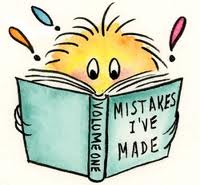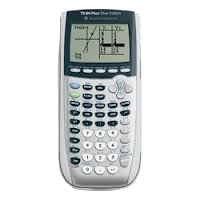
Stop Making Careless Errors in SAT Math
Today we will go over the steps you should take to put an end to the careless errors you keep making when attempting SAT math problems.
Before we can put an end to careless errors we need to discuss what a careless error actually is. If you look up the definition of “careless” you will get something like “not giving enough attention and thought to what you are doing.” So most people would say that a careless error is one that could have easily been prevented if only they had paid a bit more attention to what they were doing. But on the SAT this is only one of the types of errors that students call “careless.”
In fact, it is very common for students to say “my SAT math score would have been x points higher if only I didn’t make so many careless errors.” How can it be that so many students are making so many careless errors on the SAT? The answer is that most of the time students are referring to errors as “careless” even though these errors do not fit the actual definition of the word “careless.”
Most “careless” errors are not careless at all. These are usually mistakes that the student made because he or she was tricked by the question. SAT math questions are intentionally designed to be tricky. The underlying math, however, is usually so simple that when the student sees the correct answer he or she immediately understands what was done wrong. The student then erroneously dismisses the mistake as a “careless error.”
In other words, students very often mistake understanding their error quickly for having made a careless error. This kind of misinterpretation leads to bad preparation. In a sense the student falls into the test makers’ trap twice. The first time is when they are tricked into getting the question wrong. The second time they are tricked into believing that they only got the question wrong because they weren’t being careful enough.
The first trap is no big deal. It can easily be fixed by redoing that problem periodically until you can get the answer right on your own. But the second trap is fatal. When you fall into the second trap you are tricked into never reattempting that problem. Guess what? If a similar type of problem comes up on the SAT you may very well get tricked again.
So for our purposes there are two kinds of careless errors – errors made due to lack of focus and attention, and errors made because of being tricked. When reading through the following list, keep in mind that I am teaching you how to minimize both of these types of “careless errors.”

(1) Stop rushing: One of the main reasons that students make careless errors on SAT math problems is that they are so worried about getting to the end of the section that they are not focusing on the problem in front of them. Do not worry about getting to the end of the section. Do each problem carefully and even take a few moments to check over your answer before you move on. You should never answer a question quickly just to get to the next question. Your speed will increase naturally as you practice and learn SAT specific math strategies.
(2) Do not get hung up on one question: Getting hung up on one SAT math question leads to rushing which in turn leads to careless errors. The remedy for this is quite simple. Always be aware of when you have spent about 30 seconds on a question. At that point you should decide if you can get the answer within the next 45 seconds. If so, then finish the problem. If not, mark it off and move on. Don’t worry – it’s not forgotten. You will come back to it later. And when you come back to it you will still remember the work that you have done, so that none of that time was wasted.
Remark: “30 seconds” is intended for a student that is currently scoring 650 or higher on practice tests. If you are scoring between 500 and 650, then you can spend about 45 seconds before deciding if you should move on to the next question. If you are scoring below a 500, then you can spend a full minute on each question before deciding if you should move on.
(3) Learn SAT specific math strategies: The more strategies that you know, the less likely you will be to make careless errors. Using strategies will ensure that you do not get tricked. Practice using these strategies as often as possible before test day so that you can use them quickly, and effortlessly when you take your SAT.
(4) Practice solving problems in several different ways: The more ways you can solve a problem, the easier it will be for you to avoid falling into any traps that have been set for you. When practicing, I recommend trying to solve every practice problem in up to four ways:
(1) Using an SAT specific strategy
(2) The quickest way you can think of
(3) The way you would do it in school
(4) The easiest way for you
During the actual exam you should try to solve each SAT math problem using one method, and then use a second method later on when “checking over” your answer (see (9) below).
(5) Practice 10 to 20 minutes per day: If you are studying effectively, the number of careless errors you make should continually be decreasing. Make sure that you periodically keep redoing problems that you get wrong in addition to attempting new problems.
(6) Do not dismiss errors as “careless” when practicing: Anytime you get a problem wrong, make sure you mark it off, and reattempt it again in another week or so. It does not matter why you got this problem wrong. A mistake that many students make is to say “it was just a careless error – it won’t happen again,” and then to never look at that problem again. The reality of the situation is that you may very well keep making that same “careless” error because you may fall into the same trap. So do not just assume you will get the problem correct next time you attempt it. Wait at least a few days, then reattempt the problem again, and you will see firsthand whether you get it right or wrong. If you still get it wrong attempt it again in another week. Repeat until you get it right on your own.
It is important that you wait at least a few days before reattempting a problem you got wrong – you want to give yourself a chance to forget the nature of that specific problem. This will ensure that you are actually solving the problem, and not just “recalling the solution.”
Redoing problems you get wrong is extremely important – more important than attempting new problems. This is what separates students that show dramatic improvement from students that show only average improvement. Remember, you learn from your mistakes, not your successes!
(7) Make sure you have answered what the question was asking for: After you get your answer look back at the question and make sure you are answering what they asked for. For example, are they asking you to solve for x, or for 3x?
(8) Do not go with your instinct on hard questions: The more difficult SAT questions are specifically designed to trick you. This means that if you go with your first instinct on these questions, you are probably falling right into the trap that was laid out for you. On high numbered math questions on the SAT you should actually eliminate a choice if your intuition leads you to that answer too quickly. If you have a proper justification for why that particular answer is correct, then of course you can choose that answer. Otherwise however you should take a guess from the other choices. Also relevant here is the method of Quasi-elimination.
(9) “Check” your answers the correct way: If you are pacing yourself properly during the exam, you should wind up with several minutes to check over your answers. So what is the best way to do this?
DO NOT simply look over your work. Start the test over and redo each question from the beginning without looking at your prior work. Ideally you should try to use a different method than you used the first time (See (4) above).
If you picked numbers the first time, then at least pick new numbers. If you cannot think of a different way to solve it, that is okay. Just do it again. Then compare your two answers. If they are the same, move on. If not, then take a little time to catch your careless mistake.

(10) Use your TI-84 calculator effectively: Your calculator can be used to save time or to waste time. Sometimes I see students typing away on their calculators without taking any break. What they are usually doing here is wasting time. Your calculator is a tool that is there for you to speed up computations. It is not there to solve the problem for you.
If you are taking the test right, you shouldn’t be using your calculator all that much.
That said, make sure that you do use your calculator for arithmetical computations (on the section where you are allowed to do so). This is usually quicker than doing computations by hand or in your head, and you are less likely to make a careless error.
Finally, make sure that you know how to input things into your calculator correctly. Many students mess up their order of operations when using calculators, especially using parentheses correctly. Remember that, as a general rule numerators, denominators and exponents should all be in parentheses when using your calculator.
How to prepare in a way that minimizes careless errors: You may want to try preparing for SAT math with the GET 800 collection of books. If you do, you will notice that you will begin making fewer and fewer careless errors as you go through your preparation. Click on the picture below for more information about these books.
Click Play in the Video Below to Learn How to Stop Making Careless Errors In SAT Math
Best of luck,

Dr. Steve
Get 800


